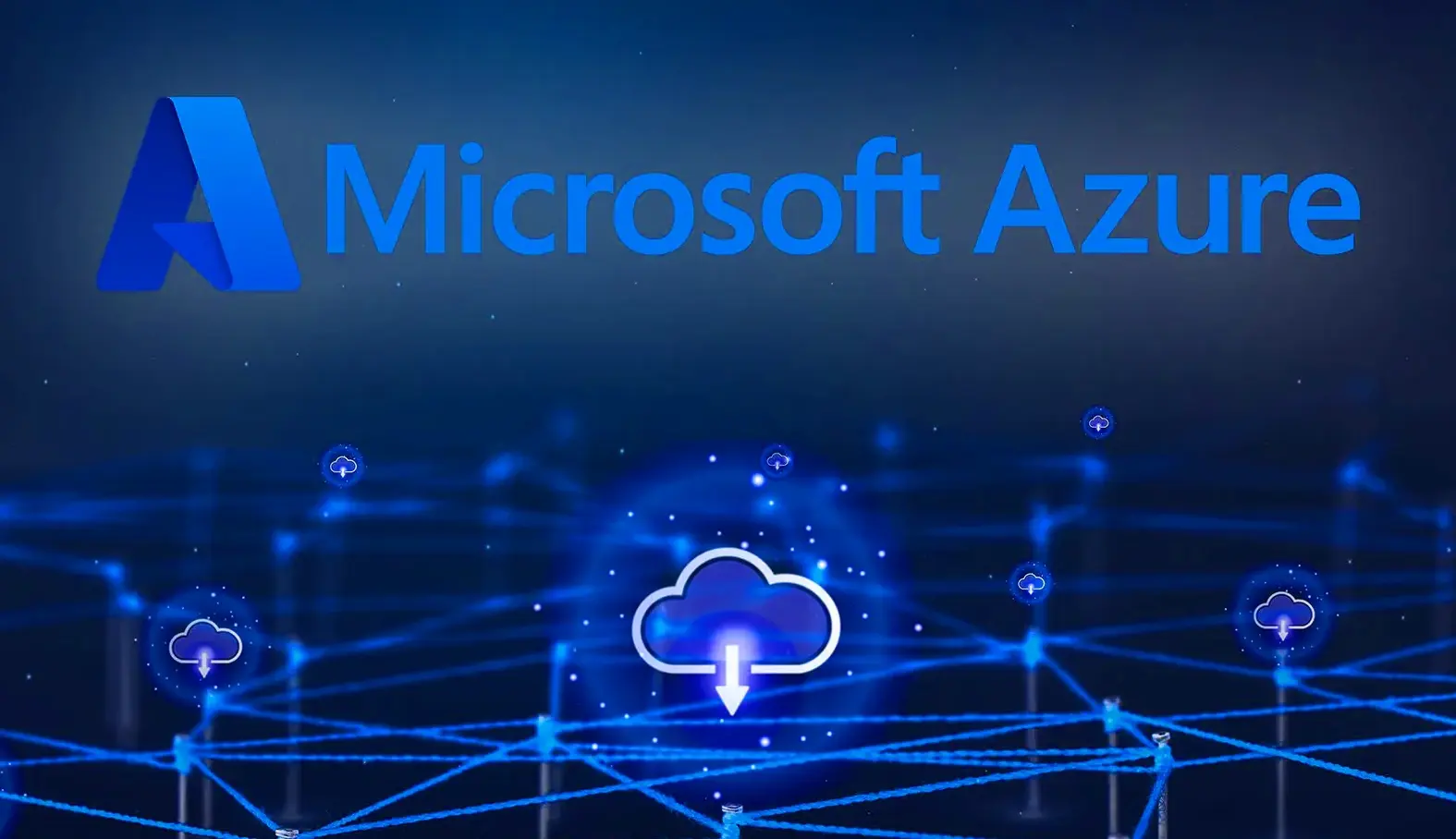Ever wonder how huge services like Xbox Live or popular business apps handle millions of users without a hitch? Or how a small company can get super powerful computer systems without buying expensive gear? The answer, more and more often, is cloud computing, and one of its biggest names is Microsoft Azure.
Think of Azure like this: Instead of owning your own factory (a room full of servers and equipment), you rent space and tools from a huge, global factory run by Microsoft. You only pay for the machines, storage, and services you actually use, and you can get as much or as little as you need, whenever you need it. That's the core of Azure – it gives you computing power on demand, right over the internet, managed by Microsoft.
So, why learn Azure? Because it's everywhere in the business world, especially if you work with Microsoft products like Windows or Office. Knowing Azure opens up great career doors, gives you incredible freedom for your own projects, and lets you build almost anything you can dream up online.
Let's begin our journey!
Getting Started: Your First Steps with Microsoft Azure
Diving into Azure can feel a bit like exploring a giant city with endless streets. But don't worry, we'll guide you through the main parts.
First Stop: Making Your Azure Account
Your very first move is to create an Azure account. Just head to the Azure website and look for the "Start free" or "Create a free account" button. You'll need a Microsoft account (like an Outlook.com email), a phone number, and a credit card. Even for the free stuff, the card is just to check you're real; you won't get charged unless you go past the free limits.
Top Tip: Azure has a very generous Free Account. This gives you 12 months of popular free services, plus over 55 always-free services, and a credit to try other services for the first 30 days. It's awesome for learning and trying things out without running up a bill. Just keep an eye on those limits!
Your Control Center: The Azure Portal
Once you log in, you'll land in the Azure Portal. This is your main dashboard, your control panel – basically, where you run everything! It's a website where you can find, set up, and manage all of Azure's different services. It might look a bit busy at first with so many icons, but you'll quickly get used to finding your way around. That search bar at the top is your best friend!
Simple Ideas You Should Know
Before we explore the services, let's clear up some basic Azure ideas:
- Regions and Availability Zones: Azure runs in many different parts of the world, called Regions (e.g., "East US," "West Europe"). Each Region has several separate places called Availability Zones (AZs). Think of AZs as different buildings or clusters of data centers within a Region. They're far enough apart so if one has a power outage or a problem, the others are safe, but close enough to talk to each other super fast. Picking a Region near your users makes things quicker, and using a few AZs helps your apps stay online even if one data center goes down.
- Resource Groups: As you create things in Azure (like virtual computers or storage), you'll want to keep them organized. A Resource Group is like a folder that holds related Azure resources. It makes it easy to manage, monitor, and delete all the parts of a single project together.
- Subscriptions: Your Azure account is tied to a subscription. This is basically a billing account and a boundary for your services. You might have one subscription for personal projects and another for work, each with its own billing and set of permissions.
- Pay-as-you-go: This is exactly what it sounds like. Instead of buying expensive computers or storage upfront, you only pay for Azure services only when you use them, and only for the exact amount you use. This could be by the hour for a virtual machine, by the amount of data you store, or by how many times your code runs. It's super cost-effective because you're not paying for idle resources.
- Security (The Shared Responsibility Model): Security is a huge deal with Azure. They use a "shared responsibility" idea, similar to other clouds:
- Microsoft secures the cloud: They handle the security of their buildings, computers, networks, and everything behindthe scenes.
- You secure inthe cloud: You're in charge of protecting your own data, deciding who can get to your stuff, setting up your own network safety (like firewalls), and making sure your apps are secure. It's a team effort!
Your First Services in the Cloud: Basics for Beginners
Let's check out some core Azure services you'll probably bump into first.
Azure Virtual Machines (VMs): Your Virtual Computers
Think of an Azure VM as renting a computer in the cloud. You can pick different sizes (like choosing a laptop with certain power), operating systems (Windows, Linux), and get them running in minutes.
- What it is: A service that gives you "computer power" you can easily adjust in the cloud. Basically, it's a virtual computer.
- Common Uses: Running websites, web apps, databases, software development tools, and almost any other computer task you'd normally do on a real computer.
- Simple Idea: Instead of buying a physical computer that sits in your office, you're "renting" a powerful virtual computer from Microsoft's huge data centers.
Azure Blob Storage: Cloud Storage for Anything
Azure Blob Storage is like having an incredibly huge, super-organized online storage space for all your digital files – whether they're text, pictures, videos, or anything else. "Blob" stands for Binary Large Object, meaning it can store any type of data.
- What it is: Storage for any kind of digital "object" (like files), built to hold huge amounts of unstructured data (data without a rigid format) from anywhere. Data lives in "containers" (like folders).
- Common Uses: Storing website pictures and videos, backing up important data, hosting simple websites, and collecting lots of data for analysis.
- Simple Idea: It's a massive, reliable, and safe place to store your files online. Think of it like a super-sized Dropbox for your apps and data.
Azure SQL Database: Databases Without the Fuss
Managing a traditional database computer can be a huge headache – fixing problems, making backups, making it bigger, keeping it safe. Azure SQL Database takes all that pain away.
- What it is: A cloud-based, fully managed relational database service based on the Microsoft SQL Server engine. It handles all the underlying server work for you.
- Why it's Useful: Microsoft takes care of all the server management behind the scenes. You just focus on your data and what your application does.
- Simple Idea: You get a fully managed database that's ready to use, without needing to be a database expert or worrying about the server it runs on.
Azure Virtual Network (VNet): Your Own Private Network
When you start putting your applications and services in Azure, you want them to be secure and separate from everyone else's. An Azure VNet creates your very own private, isolated network inside Azure.
- What it is: A service that lets you put your Azure resources into a private network that you set up. It's like having your own private data center, but in the Azure cloud.
- Why it's Important: You get full control over your network, including its addresses, sections, and how traffic flows. This is vital for security and keeping things organized.
- Simple Idea: Imagine Azure is a huge apartment building. A VNet gives you your own private apartment (network) where you decide where the doors and windows (security rules) are.
Stepping Up Your Game: Intermediate Azure Ideas
Once you're comfortable with the basics, it's time to learn how to manage who can do what, connect your resources safely, and keep an eye on them.
Azure Active Directory (Azure AD): Who Can Access What?
Azure AD is super important because it's how you decide who gets to use your Azure stuff and what they're allowed to do. It's Microsoft's cloud-based identity and access management service.
- Users: Individual people or apps that work with Azure.
- Groups: Collections of users, making it easier to give permissions to many people at once.
- Roles: Define specific permissions (e.g., "owner," "contributor," "reader") that you can assign to users or groups for different resources.
- Simple Idea: Azure AD is like the security guard and key master for your Azure account and all your Microsoft cloud apps (like Office 365). It makes sure only the right people (or services) can get through the right doors.
Deeper Dive into Networking: Inside Your VNet
Understanding VNets is key for building secure and well-connected apps.
- Subnets: Smaller sections within your VNet. You'll usually have public ones (for things that need internet access, like web servers) and private ones (for things that shouldn't be directly online, like databases).
- Route Tables: Control where network traffic goes within your VNet and out to the internet.
- Network Security Groups (NSGs): Your Cloud Firewalls:
- NSGs: Act like firewalls for your individual virtual computers or subnets, controlling what traffic can come in and go out.
- Azure Load Balancer: Distributes incoming network traffic evenly across multiple virtual machines or services to improve performance and reliability.
- Simple Idea: You're not just renting an apartment (VNet) anymore; you're now designing the rooms (subnets) and putting in all the locks and alarms (NSGs) and traffic directors (Load Balancers) yourself.
Keeping an Eye On Things: Monitoring and Logging
You need to know what's happening with your Azure resources – are they working well? Any problems?
- Azure Monitor: Watches your Azure resources and apps. It collects data (like how much computer power is being used, network traffic) and records events, and you can set alarms if something goes wrong.
- Azure Log Analytics: A service within Azure Monitor that lets you collect and analyze log data from various sources in a central workspace. It's super helpful for finding problems and doing security checks.
- Simple Idea: Azure Monitor is like the dashboard of your car, showing you speed and fuel. Azure Log Analytics is like a detailed logbook or security camera recording every action and event in your cloud environment.
Handling the Rush: Azure Auto scale
Imagine your website suddenly becomes super popular! How do you handle all those visitors without your site crashing?
- Azure Auto scale: Automatically adds or removes computer power (like virtual computers or app instances) based on demand. You set the rules (e.g., "if my computer power goes above 70%, add another computer").
- Simple Idea: It's like having a team of assistants who automatically hire more help when your workload gets too heavy and then let them go when things quiet down. So, you only pay for the help you actually need!
The Next Level: More Advanced Azure Uses
Once you've got the hang of the intermediate ideas, you can start building more complex, smart, and cost-effective solutions.
Serverless Computing (Azure Functions): Running Code Without Servers
This is a game-changer! With Azure Functions, you don't even think about the servers. You just upload your code, and Azure runs it automatically when specific events happen.
- Concept: You write small bits of code (functions) that are kicked off by events (e.g., a file uploaded to storage, a message arriving in a queue, a user clicking a button). Azure handles all the computers in the background.
- Benefits: Super cheap (you only pay when your code runs), grows as big as you need it to, and you don't have to manage any servers.
- Simple Idea: Instead of having a kitchen (server) running all the time, you have a magic button. When someone presses it (an event), a chef (Azure Function) instantly appears, cooks one dish, and then disappears. You only pay for the food cooked, not for keeping the kitchen open.
Containers (Azure Container Instances, AKS): Packaging Your Apps Neatly
Containers, like Docker, are a way to bundle up your app and all its pieces (code, tools, settings) into one neat, isolated package. This makes sure your app works the same way everywhere.
- Azure Container Instances (ACI): A simple way to run single containers or small groups of containers in Azure without needing to manage servers or complex orchestration.
- Azure Kubernetes Service (AKS): A managed service for Kubernetes, which is a popular system that helps you manage many containers easily.
- Why Use Them: They make it much simpler to build, launch, and grow apps consistently across different computer environments. ACI is great for quick tasks; AKS is for bigger, more complex apps.
- Simple Idea: Imagine your app is a Lego model. Instead of just giving someone instructions and loose bricks, you put your finished model into a clear box (container) so it always looks and works the same, no matter where it's moved. AKS helps you manage a whole city of these Lego models.
Databases Beyond the Usual (Azure Cosmos DB): Super-Fast NoSQL
While Azure SQL Database is great for standard databases, sometimes you need something different for very large, super-fast, or very flexible data.
- Azure Cosmos DB: A fully managed NoSQL database service built for global-scale, high performance, and flexible data models. It supports various NoSQL styles (document, key-value, graph).
- When to Use It: Perfect for apps that need lightning-fast responses no matter how big they get, like gaming, mobile apps, IoT, or e-commerce.
- Simple Idea: If Azure SQL Database is like a perfectly organized spreadsheet for your data, Cosmos DB is like a super-fast, flexible, and massive collection of individual, self-contained note cards that can be stored and accessed anywhere in the world.
Making Development Easier: DevOps on Azure
DevOps is all about bringing the people who write code and the people who run it closer together. It uses automation to get software out faster and more reliably.
- Azure DevOps: A suite of services that provides tools for the entire software development lifecycle, including:
- Azure Pipelines (CI/CD): Automates the building, testing, and launching of your code.
- Azure Repos: Git repositories for your code.
- Azure Boards: Planning and tracking work.
- Infrastructure as Code (Azure Resource Manager Templates - ARM Templates): Writing code (in JSON format) to set up and manage your Azure computers, networks, and databases. This makes your setup reusable, consistent, and easy to track changes.
- Simple Idea: Instead of manually building every part of your house (your setup) and putting together furniture (launching code), DevOps is like having blueprints (ARM Templates) and robots (Azure Pipelines) that do it all automatically and perfectly every time.
Keeping an Eye on the Bill: Cost Management
It's easy to get excited and use lots of Azure services. Learning to manage your spending is a very important advanced skill.
- Azure Cost Management + Billing: A set of tools in the Azure portal that helps you track your spending, analyze costs, set budgets, and receive alerts.
- Azure Advisor: Gives you personalized tips to make your Azure resources cheaper, faster, more secure, and better overall.
- Simple Idea: These are your financial tracking tools, making sure you don't overspend on your cloud resources. Think of them as your smart budget planner and money-saving advisor for Azure.
Your Learning Path and Next Steps
Azure is a huge and always changing platform. The secret to mastering it is to keep learning and, most importantly, to practice hands-on!
- Get Your Hands Dirty: The absolute best way to learn is by actually doing things. Use the Free Account to start virtual computers, store files, and set up a simple database. Build small projects to see how things connect.
- Read the Microsoft Learn Guides: Microsoft provides excellent, super detailed, and free learning paths on Microsoft Learn. This is your go-to official source for structured learning.
- Check Out Online Courses and Certifications: Websites like Coursera, Udemy, and Pluralsight offer structured video courses. Microsoft also has official Azure certifications (like Azure Fundamentals) that can prove your skills and help your career.
- Join the Community: Get involved in Azure user groups, online forums, and developer groups. Learning from others, asking questions, and sharing your experiences is super valuable.
Conclusion: The Power of Azure in Your Hands
Microsoft Azure is more than just a bunch of tools; it's a huge shift in how we build, launch, and manage technology. From simple personal websites to complex company apps and cutting-edge AI, Azure provides the strong, reliable, and secure backbone that helps new ideas take off worldwide, especially for those who already use Microsoft products.
By understanding the main ideas and services, starting with the basics, and practicing consistently, you'll be well on your way to using the amazing power of the cloud. The journey keeps going, but there's no limit to what you can create. So, go ahead, jump in, and start building! The Azure cloud is waiting for you.
Leave a comment
Your email address will not be published. Required fields are marked *



